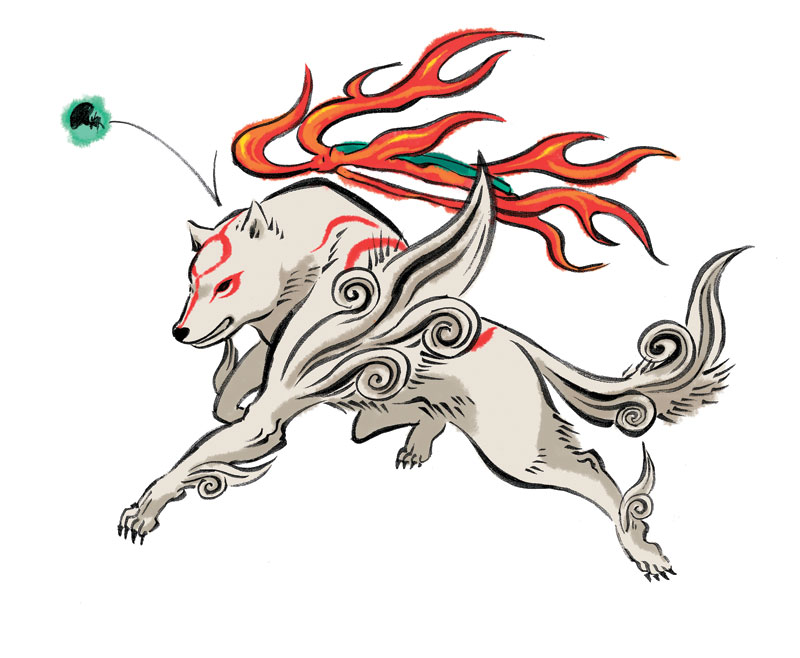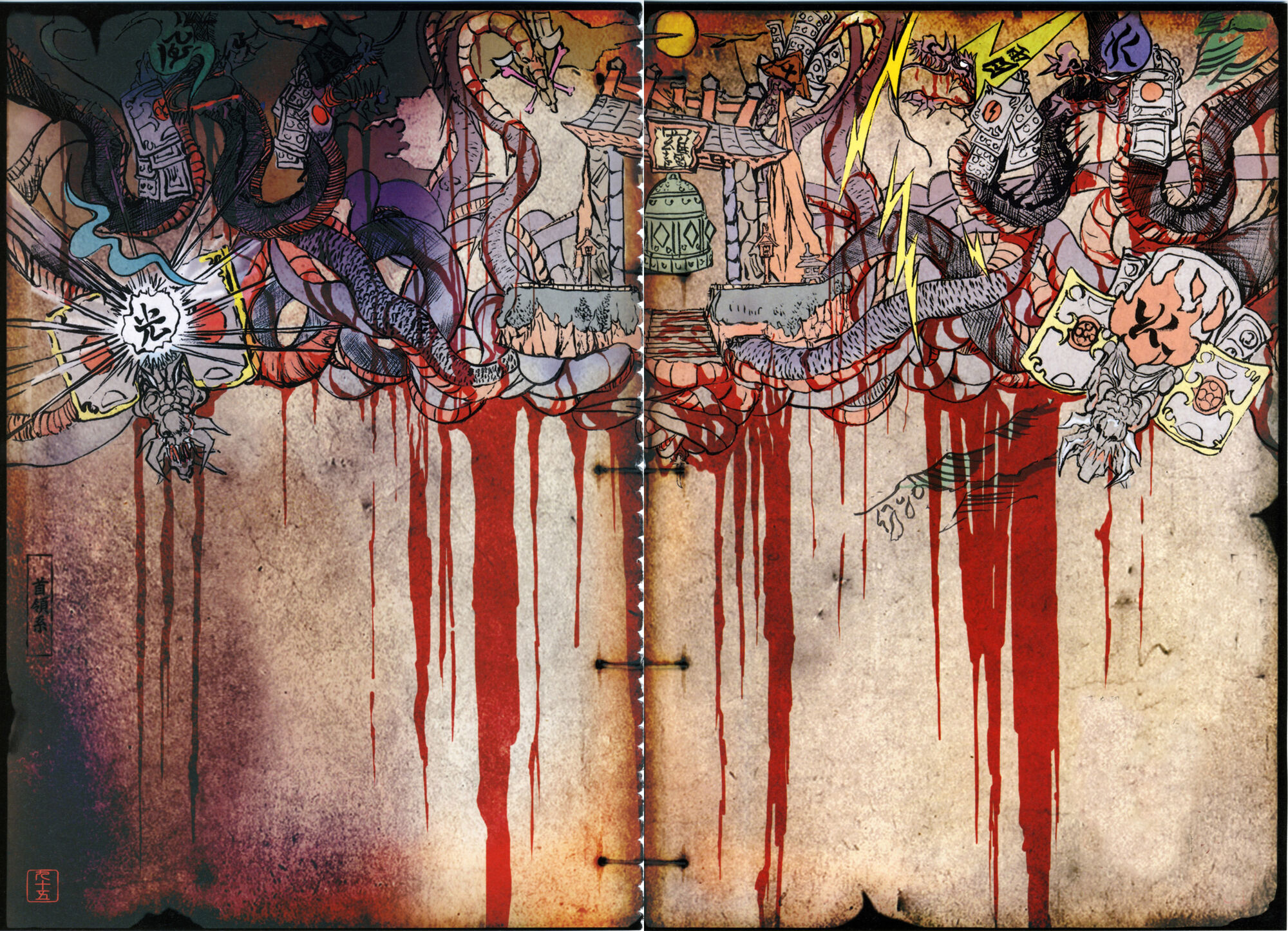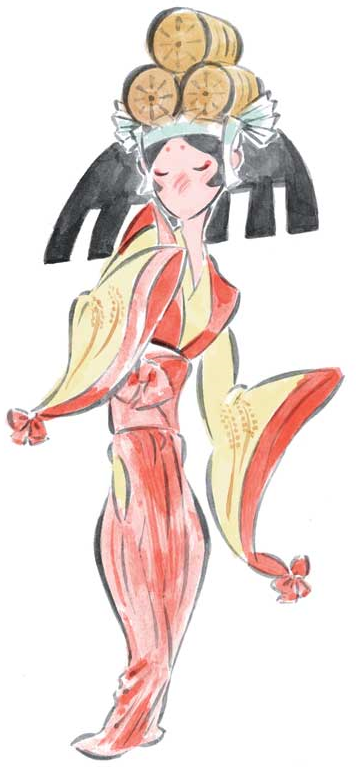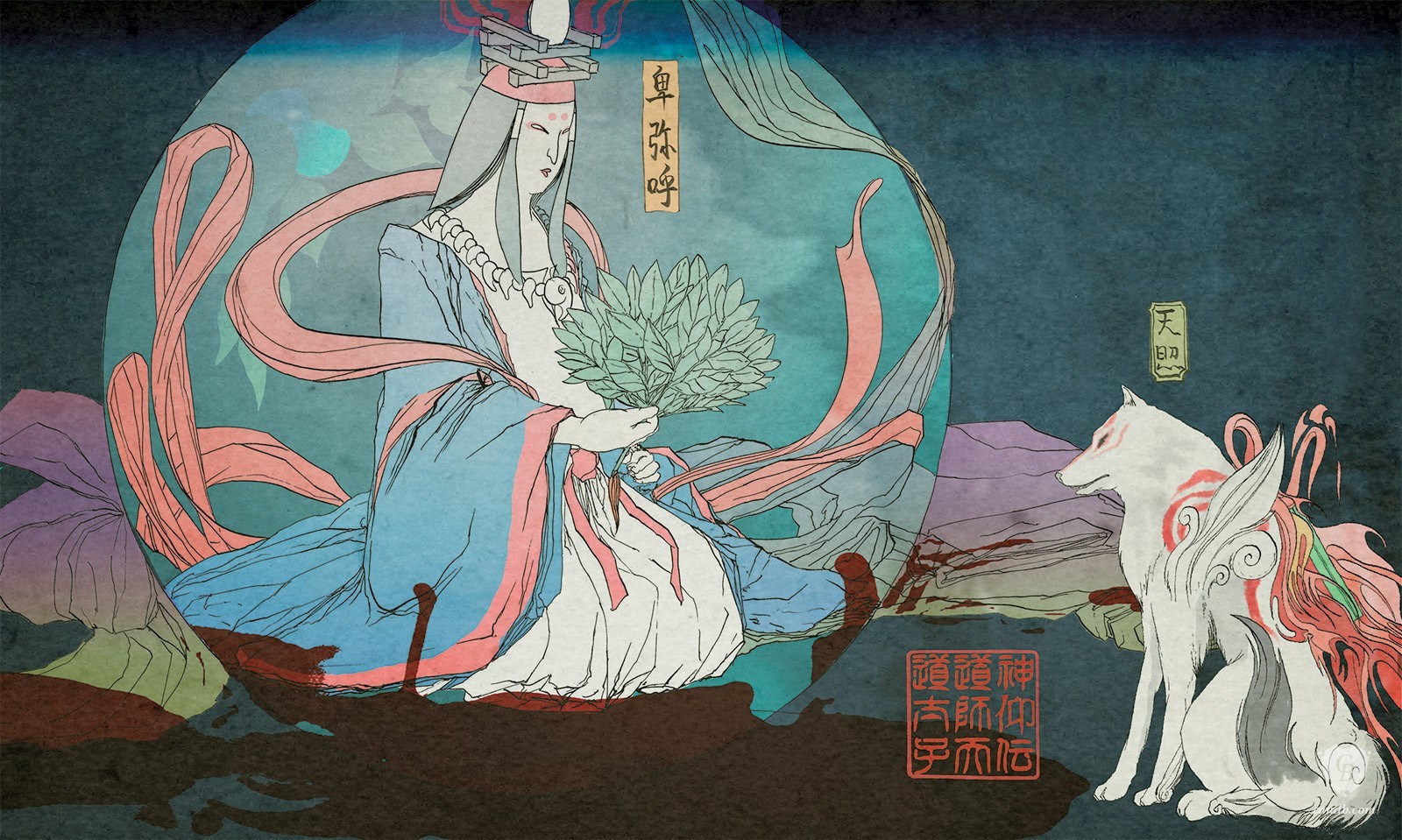But at the end of 2017, there was a rereleased game that was on the down low. And yet this game has been acclaimed from when it was first released through its sales were moderate at best. This game was one I heard about but never played until I got it back in 2015. But as I play the PS3 download version, I was immersed in a world of color, fantasy, myth, and art. This game is Okami!
Backstory: The game was originally supposed to be all 3-D and 3-d environments made to give the game a realistic look but instead they decided for a look with more of a meaning and went with Watercolors and Sumi-e (the art of Japanese ink painting. Look at this)

(https://www.istockphoto.com/vector/japan-traditional-japanese-painting-sumi-e-art-temple-sun-lake-gm688478754-126801097)
Thus this was one of the important aspects of Sumi-e painting focuses on nature and harmony with it. And it takes an entire lifetime to master. But another aspect (the plot) is centered on many of the Shinto Myths found in the books The Kojiki and the Nihon Shoki. Not just major myths but even hidden references like the tale Okuni-Nushi and the Hare of Inaba, Princess Kaguya, The Bamboo Cutter and the Sparrow Clan, and Otohime and Urashima Taro. But the main storyline has a reimagined style of the creation myth of Japan and the myth of the creation of demons and monsters in Japan.
Just to add one more important thing, Okami is the japanese word for wolf but it features the kanji for god (Kami) so it's a picture pun on the fact you're playing a wolf god.
Plot: The Plot is heavily taken from Mythology and reinterprets classic Shinto Myths and Folklore into this game. But it's divided into 3 parts, each focused on its own mythos. But the most popularly known to us is the tale of Orochi and Susano-o. In the game, Orochi has been foolishly revived and the darkness has penetrated most of Eastern Japan with little hope in the world where all the gods have been reduced to being little to nothing. In a desperate hope, Sakuya summons the last of her power to get Amaterasu to save the world. Assisting her is the sprite Issun, a wandering artist who assists as our Navi to Amaterasu's Link (it's a spot on comparison with Navi talking a lot and Link being silent, Issun is at least funny and expressive and Amaterasu just barks.) And now you play as the two of them searching to destroy the dark fogs over Japan and restore order and the belief in the gods again.

Amaterasu (wolf) and Issun (sprite)
(http://makingthecrossover.wikia.com/wiki/Touhou_vs._Capcom/Amaterasu)
Characters: There are so many characters to enjoy and love but the main characters are quite a treat and I kinda don't want to spoil the other two plotlines so I'm gonna keep them on the down low.
Amaterasu: Based on the Goddess Amaterasu, Ammy is the Sun Goddess of the world and works with 12 other lunar zodiac inspired gods to make up the 13 Celestial Brush Gods. She is the playable protagonist and has the power to make the sun beam down on the world.

(http://okami.wikia.com/wiki/Amaterasu)
Issun: The Wandering artist. He is searching for all of the heavenly brush techniques to be a master artist. Can be a bit of a perv since he notices all the beautiful women in this game.

(http://okami.wikia.com/wiki/Issun)
Sakuya: Based on Konohaka Sakuya, she's the goddess of flowers and trees. She called for Amaterasu to fight against the darkness. She's a very sympathetic goddess in similar standing to a wood nymph of Greek lore with being the protector of the Konohana tree in Kamiki Village and being their protector. Has ... um... nice peaches??..?

(http://okami.wikia.com/wiki/Sakuya)
Susano: Based on the God Susano-O, Susano is a lazy swordsman and descendant of the great hero Nagi. The polar opposite of what Nagi is thought to have been (heroic, amazing and bold while Susano is Lazy, boasting, cowardly) and he himself carries himself with way too much hubris.

(http://okami.wikia.com/wiki/Susano)
Orochi: Based on the 8 headed monster Yamato-no_Orochi, he's a monster who eats maidens every year for a sacrifice. After 100 years of death, he as revived completely ready for a new era of Darkness. (I really love this picture with the blood and emphasis on dark colors and hues.)

(http://okami.wikia.com/wiki/Orochi)
Kushi: Based on the Goddess Kushinada-Hime, Kushi is a simple Sake Maiden. However, she is chosen as the new sacrifice to celebrate Orochi's rebirth. She has a plan up her sleeves to distract Orochi and she has a crush on Susano.

(http://okami.wikia.com/wiki/Kushi)
Gameplay and Battles: The gameplay is similar to The Legend of Zelda series (though I haven't played much Zelda, it's familiar to me so I'm aware.) But the main focus is on art and nature. Art with the Suni-e ink painting environments and Nature for the main subject matter of Suni-e and the themes of nature being a heavy motif in the game.
However, in this game, you can actually be the artist. (There's even a nice detail of Amaterasu using her tail as an ink brush.) And you can use the ink to create new paths and manipulate nature. The game emphasizes the need to explore with many sidequests and new locations opening up every new act. The 1st act gets you to Eastern Japan and the countryside. The 2nd Act takes you to Western Japan and the Capital of Sei-An city and the sea coasts, and the final act takes us to Northern Japan and the Cold Tundra there.
Each environment is rich and beautiful in the gaming details and designs. Also, the philosophy of Sumi-e painting is captured with every game detail. It's not about being a realistic painting in detail; it is to capture the essence of the bounty of nature and usually, Sumi-e artists are all impressionistic in their approach and it flows well from this game. But I also like how even the humans and urban and town environments are also in this style and flow well with the central theme of harmony with nature. Most towns are near water supplies like wells, rivers, and the ocean to add a light touch of realism to the mix too. And featured in some cutscenes are the actual Japanese paintings incorporated with both story elements and the bestiary too.
Spoiler for Act 2 but since you guys have no idea where this comes in, I'll let you experience it.

The Battles are combative and require a balanced use of both ink brush techniques and your weapons divided into 3 categories: Rosary Beads, Glaives, and Reflectors. Each has their own strengths and weaknesses with Rosary Beads giving rapid fast attacks but require distance away and do the lowest amount of damage, Reflectors doing moderate damage but still a balanced choice and Glaives being the strongest and being able to charge the attacks each but attack speed is sacrificed.
In battles, all your brush techniques will be used to by manipulating certain elements enemies give off to attack others. You can send projectiles back to enemies, get them caught in vines, make the winds blow and ice freezes them. It requires a lot of creativity to destroy these monsters. Also, make sure you look out for demon fangs. Those will help in the long haul, trust me.
At the end of the battles, you'll be judged on how fast you kill the enemies and if you avoided being attacked. The highest ranks give a blooming cherry blossom tree, the lowest ranks give a seed waiting to be grown so even the results screen is natural themed too.
The music is a beautiful combination of both western orchestra and eastern instruments. I just love the sorrowful theme at very emotional points of loss and goodbyes.
Positives:
The game is very artistic and seemingly blends the artistic style into the gameplay successfully. The tale is quick but very relaxing and zen making you want to focus on looking everywhere.
And there's a lot of sidequests to do but they feel like they are a part of the game and that if you want to choose to go further you can.
The special Stray Bead mission is long but it's especially important. It's worth doing as it tests all your abilities and searching to the test and knowledge of brush skills too.
Negatives:
Sometimes when you battle, not all your abilities go along with the game. Sometimes, I did a wind spell but it slowed time instead or when I was doing an ability, I got it connected to my weapon of choice. (Some weapons have elemental powers)
Also, the trophies are easy, maybe too easy and have little requirements but the stupid fishing one is a bore and so much to do with that one.
Overall: This game is another you should put in your Library. Only available for PS2 and Wii, this game is remastered for PS3, PS4, XBOX 1, Steam, and soon Nintendo Switch. Also, this game has such a strong aesthetic to it, it goes into the games where we can discuss the possibility of gaming as an artistic and interactive medium. The game is a must-have for Legend of Zelda fans, those who love adventure games, or for more casual gamers because the only battles you really need to fight are all story oriented but the full experience is what makes it a masterpiece.
5/5
And as usual, don't forget to follow and like and comment and critique me. Feedback is especially important to help create even more professional content for you and me.
No comments:
Post a Comment